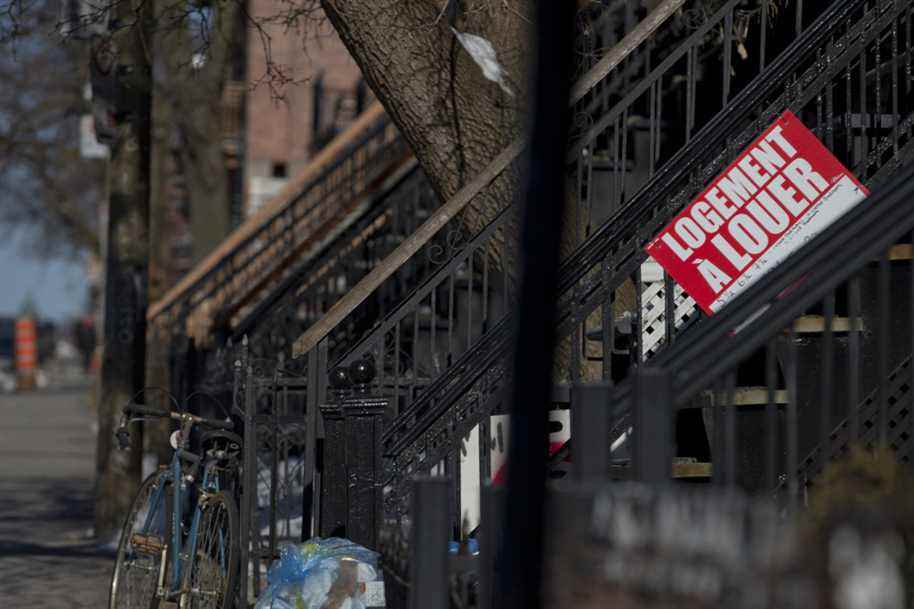A few weeks ago, Ontario announced measures aimed at increasing the supply of all housing categories in order to limit price increases. Already in February, a group of experts was urging the Ontario government to double annual production by building 1.5 million housing units in 10 years.
Posted yesterday at 2:00 p.m.
1er last April, as part of a “university morning” of the Urban Development Institute of Quebec (IDU), Professor Jean-Philippe Meloche of the University of Montreal compared the cities of Atlanta and San Francisco to illustrate the direct link between the production of residential units and their price. With construction costs exploding in the wake of the pandemic, the effects of the current imbalance between supply and demand call for targeted and urgent action.
The recent federal budget adds funds to support the construction of new units. This is good, but it will not be enough to reduce the imbalance between demand and supply. Moreover, the new incentives for first-time buyers provided for in the budget will exacerbate the effects of the imbalance by increasing demand.
The only structural way to stem the rise in prices is to add more housing units.
The responsibility of cities
Following the example of Ontario, Quebec cities must promote development. They must first move from a regulation of constraints to a regulation facilitating the realization of projects with a sufficient number of units so as to justify local services. The objective is to fill the supply gap in all ranges of housing, including, of course, the construction of social housing.
Next, they must correct the administrative burden, in particular by setting a maximum time limit for the study of applications and authorizations as well as by favoring a simultaneous analysis procedure rather than in successive stages. This simplification objective could also target the conversion of certain office buildings for residential purposes.
Finally, municipal authorities must assume the leadership necessary to call for and support densification projects. This can be done while taking care to plan the parks, walkways and other public facilities that will make the neighborhood attractive. For example, in Montreal, we can think of Blue Bonnets and Bridge-Bonaventure as not-to-be-missed opportunities to create mixed-use neighborhoods dense enough to support local living.
In a word, to act on the shortage and thus contribute to restraining the inflationary pressure of housing costs, the municipal authorities must become champions of “happy density”.
At the time of “not in my backyard”, it is true that it takes a good dose of courage. Without this assumed leadership, we will have many speeches, but few results.
National funding commensurate with social needs
The first to be affected by the housing shortage and the explosion in prices are obviously the most vulnerable clienteles. Despite all that cities can do to increase the rate of production, the problem of underfunding social and affordable housing must be solved once and for all. To this must be added a growing concern: providing shelter for the homeless. This falls under the Government of Quebec because of its responsibility in social and housing matters.
At the beginning of the year, the Union des municipalités du Québec indicated the need to build a minimum of 4,500 social housing units and 13,400 affordable housing units per year. Quebec must provide funding.
With domestic funding commensurate with need, cities won’t have to impose land charges that inflate prices. By multiplying the units, the balance between supply and demand will avoid the runaway of one-upmanship and everyone will benefit, starting with the first buyers. Finally, this major project would make it possible to meet the needs of our most vulnerable fellow citizens and offer them a place on the social ladder.
The electoral campaign to launch a housing project
The election campaign that will begin soon cannot ignore the explosion in housing costs. The will to adopt an ambitious housing policy and the intention to devote oneself to it in collaboration with the cities must be one of the central elements of this campaign.
The priority of public decision-makers must be to facilitate the realization of a greater number of units. Today, to balance supply and demand, the Association of Construction and Housing Professionals of Quebec indicates that it is necessary to build 100,000 housing units of all kinds, private, rental and social. To aim for a balance within 10 years, 10,000 housing units would have to be added to the 50,000 built annually. In a context where there will be an average shortage of nearly 20,000 workers per year over the next 10 years, according to the Association de la construction du Québec, the challenge will be daunting.
The next Quebec government must commit to launching a real housing project with municipalities and community stakeholders, the first measures of which will have to be implemented and funded as of the 2023 budget.
* Co-signers: Philippe MarsanPresident of the Association of Construction and Housing Professionals of Quebec; Jean-Francois ArborPresident of the Quebec Construction Association; Benoit Sainte-MarieGeneral Manager of the Corporation of Quebec Real Estate Owners

